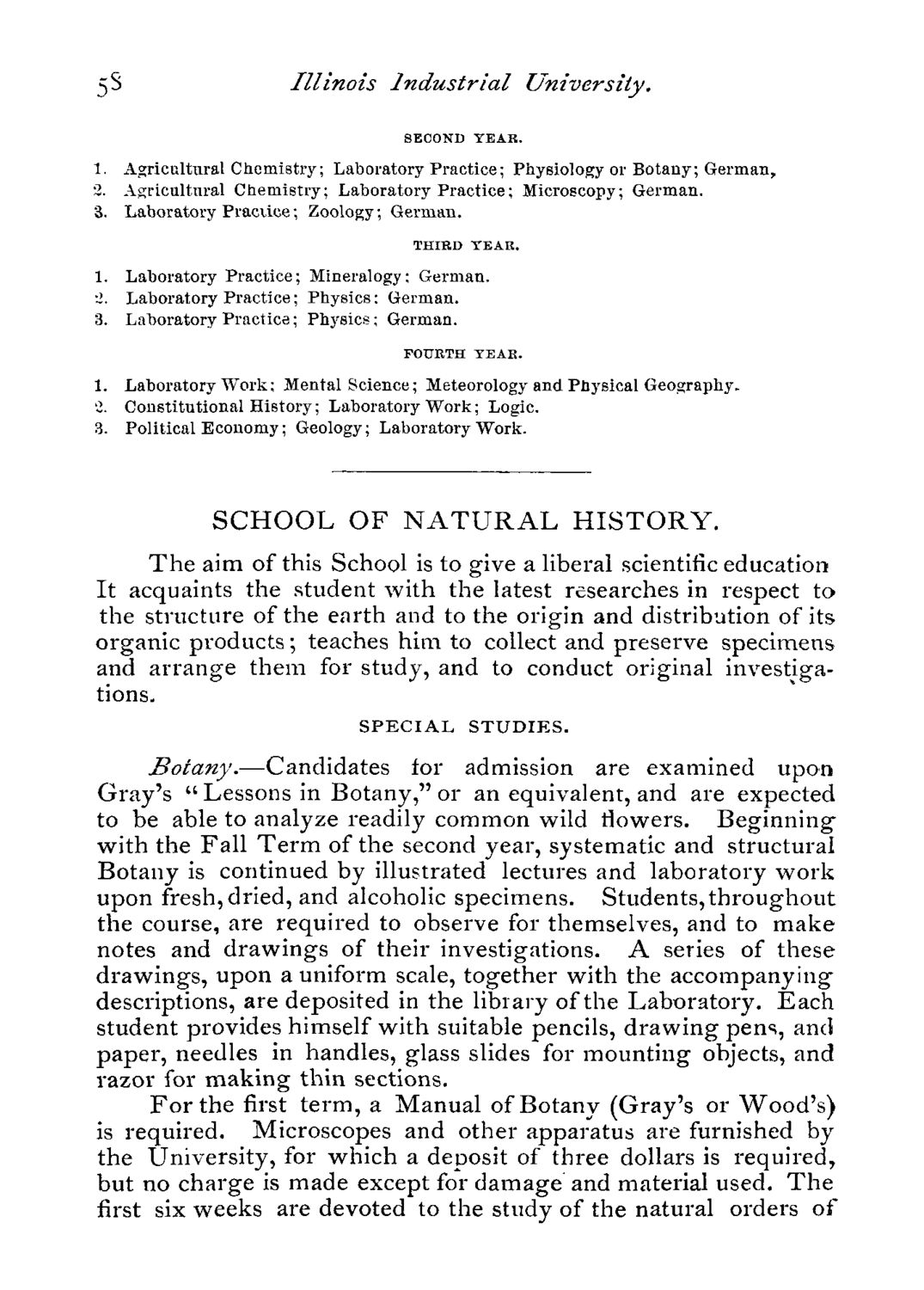| |
| |
Caption: Course Catalog - 1880-1881
This is a reduced-resolution page image for fast online browsing.

EXTRACTED TEXT FROM PAGE:
5S Illinois Industrial SECOND YEAR. University. 1. Agricultural Chemistry; Laboratory Practice; Physiology or Botany; German, 2. Agricultural Chemistry; Laboratory Practice; Microscopy; German. 3. Laboratory Practice; Zoology; German. THIRD TEAR. 1. Laboratory Practice; Mineralogy; German. 2. Laboratory Practice; Physics: German. 3. Laboratory Practice; Physics; German. FOURTH TEAK. 1. Laboratory Work; Mental Science; Meteorology and Physical Geography2. Constitutional History; Laboratory Work; Logic. 3. Political Economy; Geology; Laboratory Work. SCHOOL OF N A T U R A L H I S T O R Y . The aim of this School is to give a liberal scientific education It acquaints the student with the latest researches in respect to the structure of the earth and to the origin and distribution of its organic products; teaches him to collect and preserve specimens and arrange them for study, and to conduct original investigations. SPECIAL STUDIES. Botany.—Candidates for admission are examined upon Gray's " Lessons in Botany," or an equivalent, and are expected to be able to analyze readily common wild rlowers. Beginning with the Fall Term of the second year, systematic and structural Botany is continued by illustrated lectures and laboratory work upon fresh, dried, and alcoholic specimens. Students,throughout the course, are required to observe for themselves, and to make notes and drawings of their investigations. A series of these drawings, upon a uniform scale, together with the accompanying descriptions, are deposited in the library of the Laboratory. Each student provides himself with suitable pencils, drawing pens, and paper, needles in handles, glass slides for mounting objects, and razor for making thin sections. For the first term, a Manual of Botany (Gray's or Wood's) is required. Microscopes and other apparatus are furnished by the University, for which a deposit of three dollars is required, but no charge is made except for damage and material used. The first six weeks are devoted to the study of the natural orders of
| |